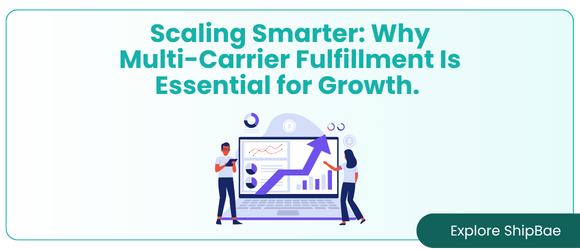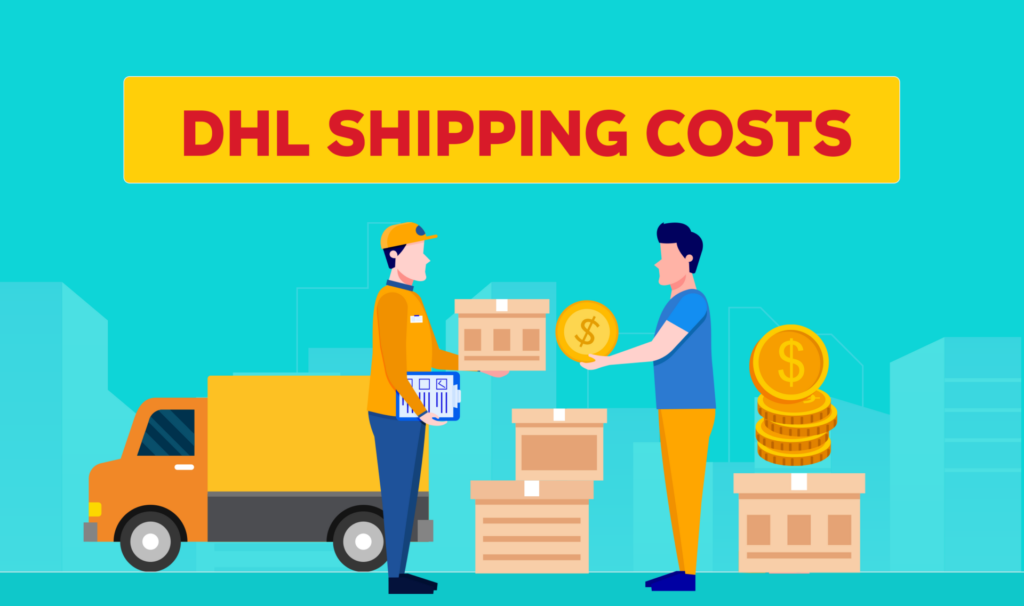The eCommerce boom is hitting turbulence due to a new wave of tariffs recently imposed by U.S. President Trump. Among the most affected are small businesses operating within the digital marketplace. Whether it's dropshippers relying on Temu or sellers sourcing through Amazon, the impact of the 145% tariff on goods imported from China is being felt profoundly. These tariffs are inflating product costs and risking timely fulfillment of customer orders.
Although a temporary 90-day tariff rollback between the U.S. and China has been introduced, the long-term outlook remains uncertain. In the meantime, established eCommerce brands face rising shipping expenses, unpredictable delivery timelines, and carrier capacity limitations. As businesses scale, the pressure to ship faster, cheaper, and reliably intensifies, making logistics strategy a critical factor in supporting or sabotaging profitability.
DHL, UPS, and USPS remain among the most commonly used carriers, each offering unique benefits and drawbacks depending on your product mix, shipping destinations, and customer expectations. In this blog, we'll examine how DHL compares to UPS and USPS in terms of cost, service, and flexibility—and how ShipBae enables growing brands to manage these challenges with smarter, more agile fulfillment.
Adapting Your Fulfillment Strategy in a High-Cost Environment
With international shipping costs rising and fulfillment risks growing, choosing the right carrier is no longer just about convenience—it's about survival. Here's How DHL, UPS, and USPS stack up for today's eCommerce businesses.
1. DHL Shipping Costs: A Quick Overview
DHL is known for its substantial international reach and premium express services. However, it's typically not the go-to for domestic shipping in the U.S. Here's a breakdown of what affects DHL shipping costs:
- Dimensional Weight Pricing: DHL calculates shipping based on size and weight, so large but lightweight packages can become costly.
- Speed: DHL express is fast, often delivering internationally in 1-3 business days, but at a premium price.
- Surcharges: expect added fees for fuel, residential delivery, remote area service, and now, exposure to increased import tariffs.
When DHL Works Best:
- You're fulfilling international orders under tight timelines.
- Your customers expect premium delivery service.
- You need reliable tracking and customs support.
However, the latest round of tariffs pressures DHL's premium rates, especially for shipments originating from or routed through China. Businesses relying on DHL for fast international fulfillment must reconsider margins or shift sourcing to offset rising costs.
2. UPS: Domestic Strength and Reliable Ground Service
UPS offers strong domestic coverage, detailed tracking, and multiple service tiers well-suited for eCommerce businesses shipping within the United States.
- Cost: Competitive for domestic shipments, particularly when negotiating volume discounts.
- Tracking & Claims: Industry-leading tracking system and responsive claims handling.
- Ideal use: Heavier packages, business-to-business shipping, and time-definite deliveries.
While UPS is less affected by tariffs for domestic shipments, its international service options-particularly for shipments from China-may be subject to the same duties now imposed on imported goods. Businesses should work closely with their UPS representatives to explore negotiated rates and zone-based optimizations to reduce exposure to tariff costs.
3. USPS: Budget -Friendly for Lightweight and Local Shipping.
USPS is often the go-to solution for eCommerce sellers shipping small, lightweight packages within the United States.
- Cost: Offers the most affordable rates for packages under 1 lb, especially when using First-Class Package Service.
- Delivery Time: Priority Mail delivers in 1-3 business days; however, delays may occur depending on location and season.
- Best For: Subscription boxes, sample kits, and orders under one pound.
USPS is generally insulated from international shipping volatility due to its limited global footprint and integration with foreign postal systems. However, businesses using USPS for last-mile delivery in conjunction with foreign-based fulfillment may still be indirectly affected by tariff-induced upstream cost increases.
4. Comparing DHL, UPS, and USPS: What eCommerce Sellers Should Consider
This comparison illustrates that no one-size-fits-all solution exists. Businesses must evaluate their average order size, shipping destinations, delivery time expectations, and cost sensitivity, especially in light of new tariff regulations that could inflate delivery costs for international shipments.
| Factor | DHL | UPS | USPS |
| Best For | Intl express shipping | Domestic, B2B, heavy goods | Light parcels, test runs |
| Delivery Speed | 1-3 days (intl.) | 1-5 days ( domestic) | 1-3 days (Priority Mail) |
| Cost Efficiency | High ( premium ) | Moderate | Low (for light parcels) |
| Dimensional Pricing | Yes | Yes | Limited |
| Tracking | Excellent | Excellent | Basic to Moderate |
| Surcharges | Many + tariff impact | Some + tariff risk (intl) | Minimal |

5. Scaling Smarter: Why Multi-Carrier Fulfillment Is Essential for Growth.
As your order volume increases and your customer base expands across regions, relying on a single carrier can become a liability. Carrier rate hikes, service delays, or geographic limitations can cut margins or delay deliveries. A multi-carrier strategy allows you to route each shipment through the most efficient and cost-effective option—USPS for lightweight orders, UPS for regional ground shipping, or DHL for international fulfillment.
Flexibility becomes even more valuable in the context of ongoing tariff shifts rather than choosing the best shipping company. Quickly shifting volume from one carrier or country to another can make the difference between absorbing added costs or passing them on to customers. Diversifying fulfillment through multi-carrier platforms like ShipBae helps mitigate the financial and operational risks of changing trade policy.
6. How Shipbae Makes This Easier
This is where ShipBae levels the playing field for established eCommerce brands:
- Compare Rates Instantly: see real-time DHL, UPS, and USPS rates.
- Save More: Access up to 89% off USPS and 82% off UPS daily rates.
- No Subscription Required: Only pay when you ship. No monthly fees.
- Simple Dashboard: Manage orders, print labels, and track shipments in one place.
- Built to Scale: Whether you're shipping 5 or 5,000 packages, ShipBae adapts to your grwoth.
ShipBae empowers businesses to make informed, cost-effective decisions on every shipment. Especially during uncertain economic times and shifting trade conditions, real-time access to pricing, multiple carrier options, and flexible tools are essential to managing fulfillment profitably.
7. Streamline Order Management with ShipBae's New Domestic vs. International Filter
As global trade dynamic shift and shipping costs fluctuate, organizing and executing your fulfillment strategy with precision is more important than ever. ShipBae has launched a new feature designed for operational clarity and efficiency to support growing eCommerce brands managing cross-border and local logistics.
With the Domestic vs. International filter now available directly within the Orders dashboard, businesses can:
- Quickly segment orders based on destination
- Gain clearer visibility into regional fulfillment workflows
- Improve decision-making when selecting carriers or allocating inventory.
This enhancement is particularly valuable for brands shipping from multiple fulfillment centers or working with domestic and international carriers affected by tariff-related cost increases. whether you're optimizing for cost, delivery speed, or carrier restrictions, this filter helps streamline your workflow and improve fulfillment accuracy.
Explore the feature inside your ShipBae dashboard and start managing your shipments with greater precision today.
Final Thoughts: Navigating Carrier Costs in a Tariff-Driven Market
DHL shipping costs are often worth it for international orders requiring speed and precision. But for growing eCommerce operations, the most innovative approach is to stay flexible and use the right carrier for each situation. Whether it's UPS for heavy boxes, USPS for affordable domestic fulfillment, or DHL for global express, ShipBae helps you confidently compare, save, and scale.
The key to fulfillment success isn't choosing a single carrier-it's having the flexibility to use the right one at the right time. With ShipBae, eCommerce brands can access enterprise-level shipping tools, negotiated discounts, and more innovative logistics management without the overheard. By streamlining rate comparisons and improving visibility into your shipping operations, ShipBae helps businesses grow stronger, faster, and more efficiently—even in the face of global trade uncertainty.
Ready to simplify your shipping and compare rates across carriers in seconds?
Start using ShipBae today—no subscription, just smarter shipping.



